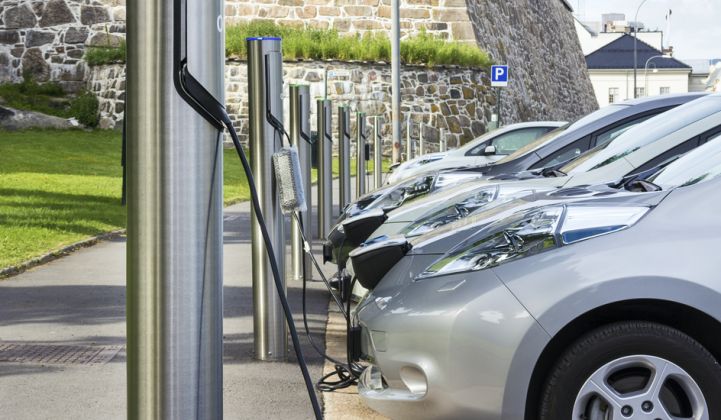Startup eIQ Mobility built software to help fleet operators game out when it makes sense to convert vehicles to electric. But it lacked the balance sheet to follow through on those recommendations with the necessary engineering, equipment installation and energy management.
Now it has a financially able partner in NextEra Energy Resources, the leading renewables developer and sister company to regulated utility Florida Power & Light. NextEra acquired eIQ last week via its distributed energy division, which means that it can now bundle fleet electrification with the distributed solar and energy storage services the company already provides.
The investment reflects a "toe in the water" strategy to "get smart in the space" while the fleet electrification trend is still young, said Chelle Izzi, executive director of distributed generation at NextEra Energy Resources.
"We’re convinced they were best in class," Izzi said in a Thursday interview. "They made a conscious decision to lead with this [total cost of ownership] analysis tool. [...] Because that was their primary product, they had just invested more in that part of the tool set."
Led by CEO Sila Kiliccote and co-founder Yann Kulp, eIQ focuses on three markets in particular: utilities, vehicle manufacturers, and commercial and industrial companies. Electric utilities are increasingly interested in supplanting gasoline or diesel as the fuel of choice for fleets in their territory; eIQ's advisory services could help them make the jump for their own fleets, and help their customers go that route as well. Similarly, electric car and truck manufacturers want potential customers to understand the benefits of electrification, such as fuel and maintenance savings, but they aren't necessarily in a position to provide that service themselves.
Calculating the total cost of ownership for electric fleets involves referencing operational needs with a database of current and future electric vehicle models, computing applicable incentives, checking utility rates for the likely cost to charge, and more. That analysis determines how many vehicles could be electrified economically and when that transition should occur. Utility Exelon, for instance, worked with eIQ to analyze electrification for its 8,500-vehicle fleet. It decided to electrify half its fleet by 2030, starting with light-duty vehicles.
But early-stage startup eIQ stayed out of the day-to-day operations of fleets and avoided taking a direct role in the work of installing charging depots. That's something that NextEra has more experience with, as a company that regularly installs and operates distributed energy equipment for commercial and industrial (C&I) customers.
"Everybody needs to find the customers that want to electrify," Izzi said. "We’re out there talking to C&I customers all the time."
Customers have already asked for holistic approaches, Izzi noted. If a distribution warehouse is considering an electric delivery fleet, its owners may want to cover the roof in solar panels at the same time. Sometimes the power demands of charging make a case for batteries to manage demand charges or avoid pricey interconnection upgrades. NextEra can wrap those services into a single package, and the company's billion-dollar balance sheet gives customers cause to trust in its longevity.
Today, fleet electrification is happening in pockets, and the business model is very much still evolving, Izzi said. But the trends are pointing to a time in the near future when fleet electrification will be advantageous across broad swaths of the country. Hydrogen fuels — an area of strategic interest for NextEra's parent company — could enter the mix as well.
"It’s a long play," Izzi said of the acquisition.




